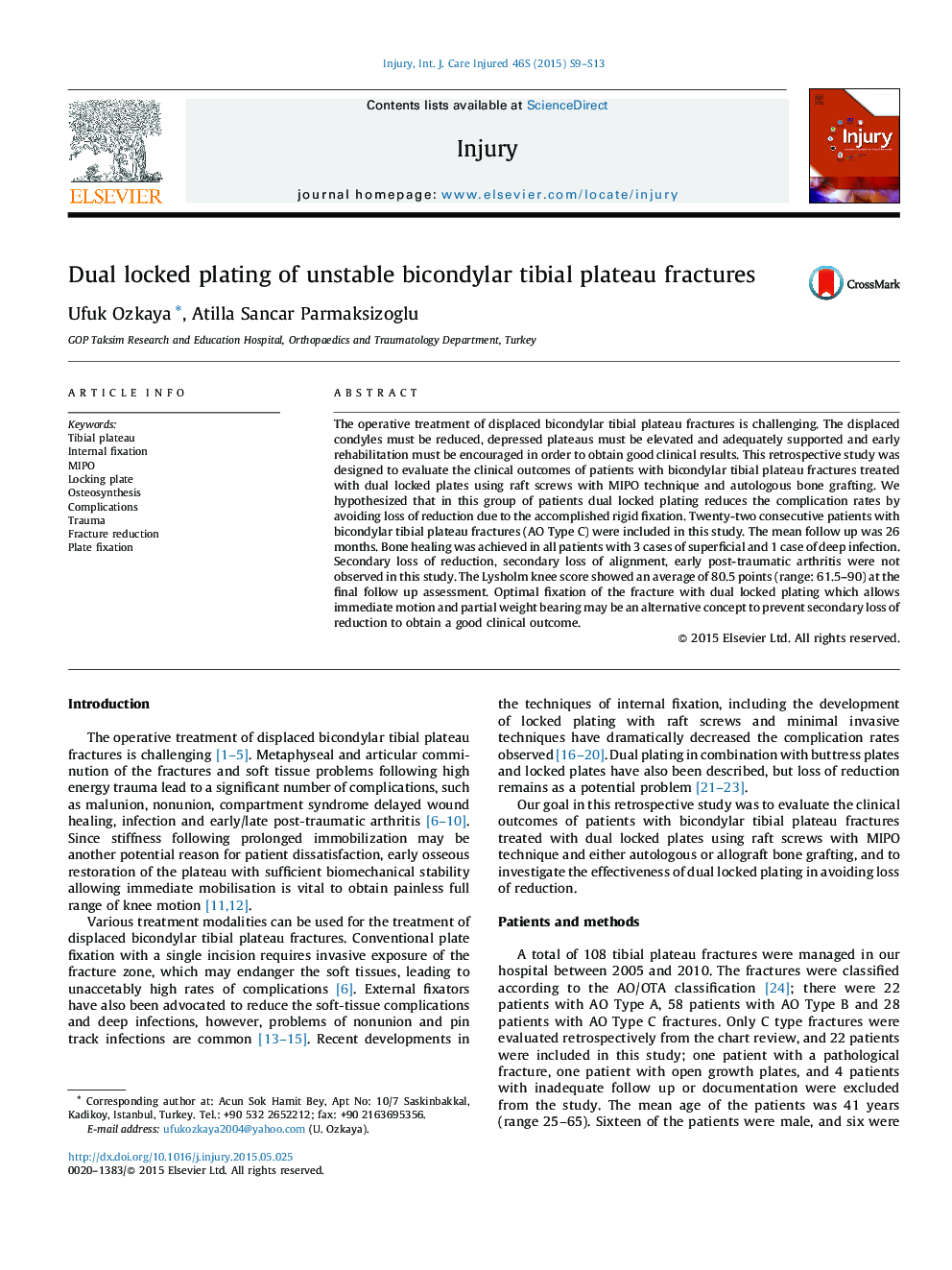| Article ID | Journal | Published Year | Pages | File Type |
|---|---|---|---|---|
| 3239250 | Injury | 2015 | 5 Pages |
The operative treatment of displaced bicondylar tibial plateau fractures is challenging. The displaced condyles must be reduced, depressed plateaus must be elevated and adequately supported and early rehabilitation must be encouraged in order to obtain good clinical results. This retrospective study was designed to evaluate the clinical outcomes of patients with bicondylar tibial plateau fractures treated with dual locked plates using raft screws with MIPO technique and autologous bone grafting. We hypothesized that in this group of patients dual locked plating reduces the complication rates by avoiding loss of reduction due to the accomplished rigid fixation. Twenty-two consecutive patients with bicondylar tibial plateau fractures (AO Type C) were included in this study. The mean follow up was 26 months. Bone healing was achieved in all patients with 3 cases of superficial and 1 case of deep infection. Secondary loss of reduction, secondary loss of alignment, early post-traumatic arthritis were not observed in this study. The Lysholm knee score showed an average of 80.5 points (range: 61.5–90) at the final follow up assessment. Optimal fixation of the fracture with dual locked plating which allows immediate motion and partial weight bearing may be an alternative concept to prevent secondary loss of reduction to obtain a good clinical outcome.
